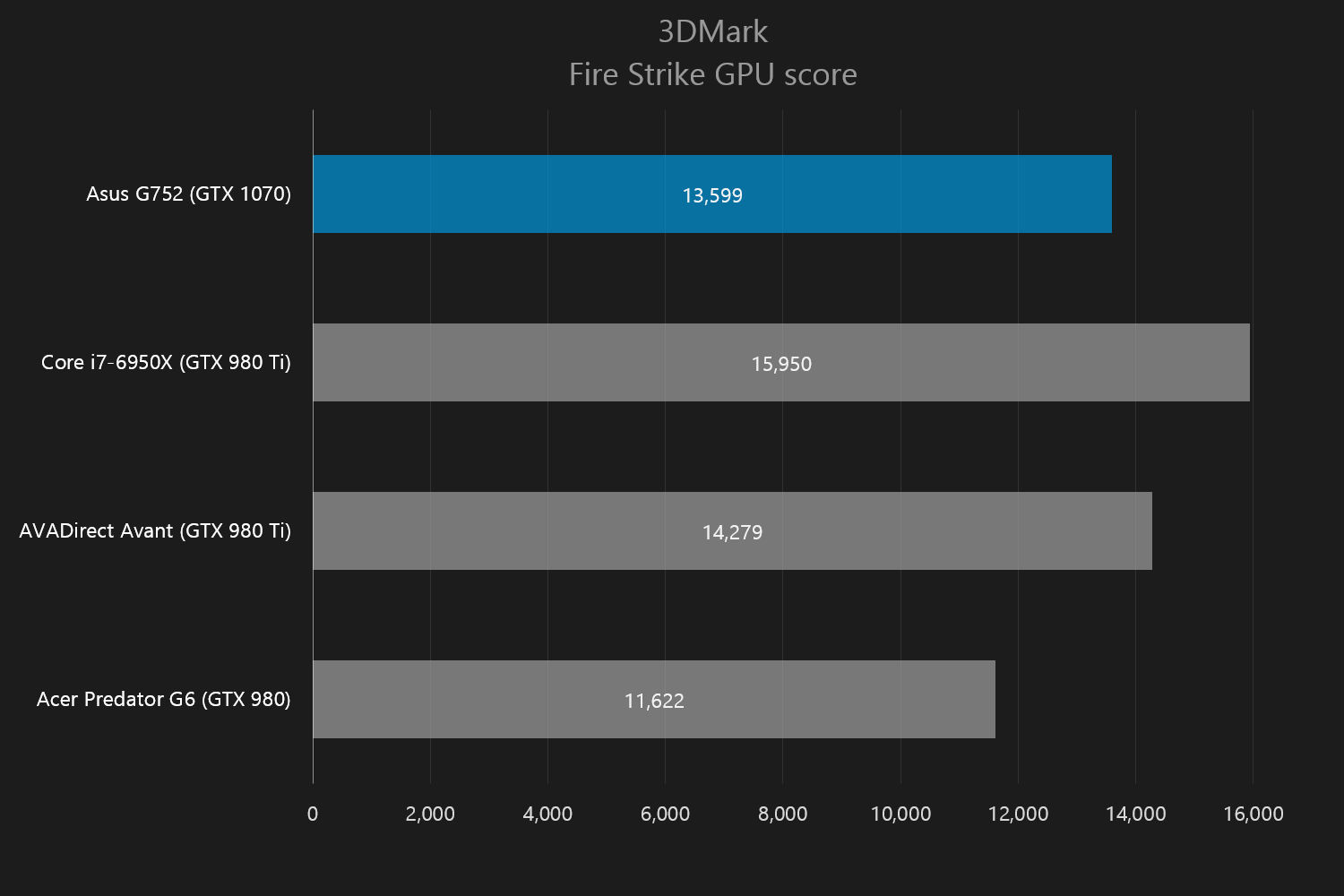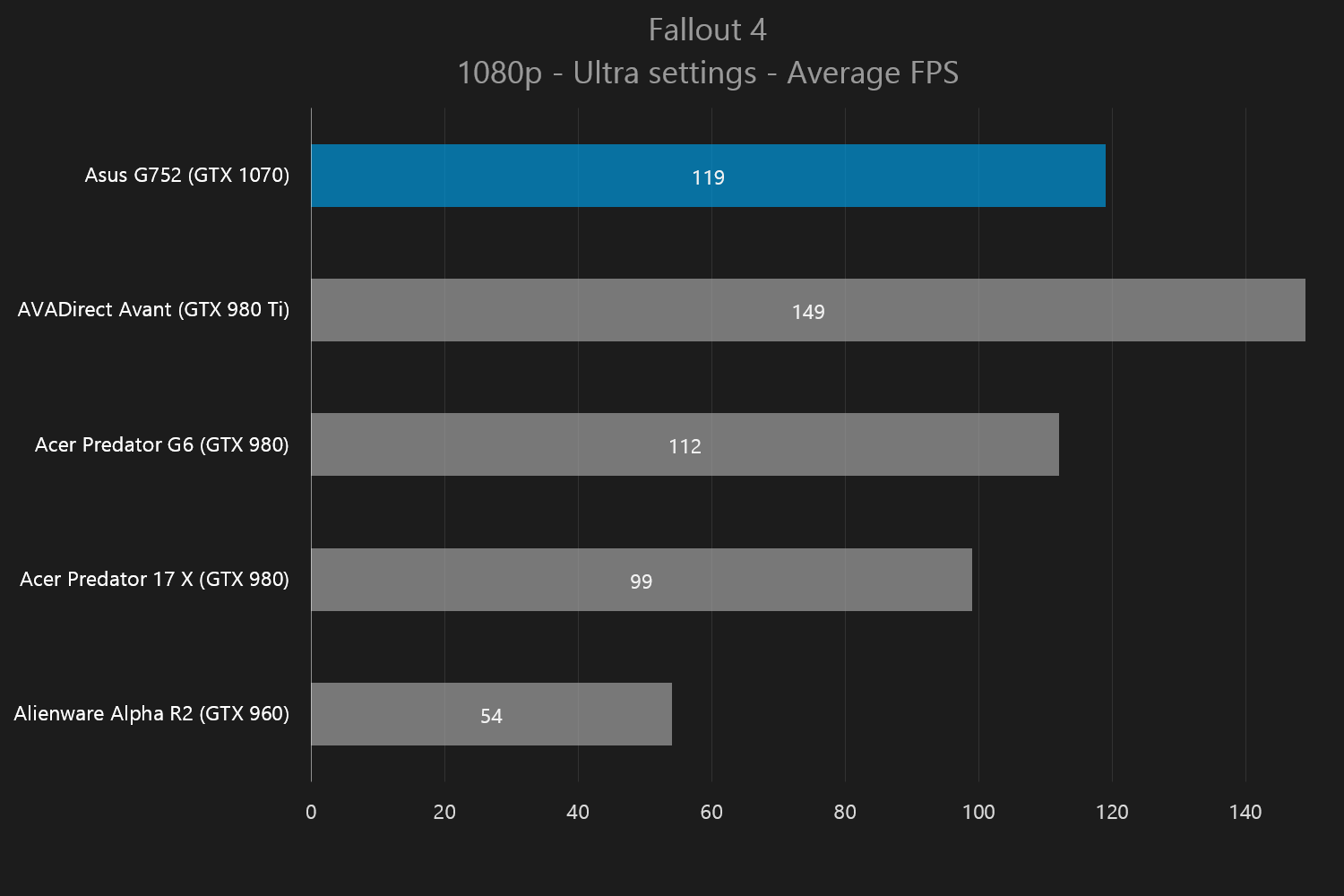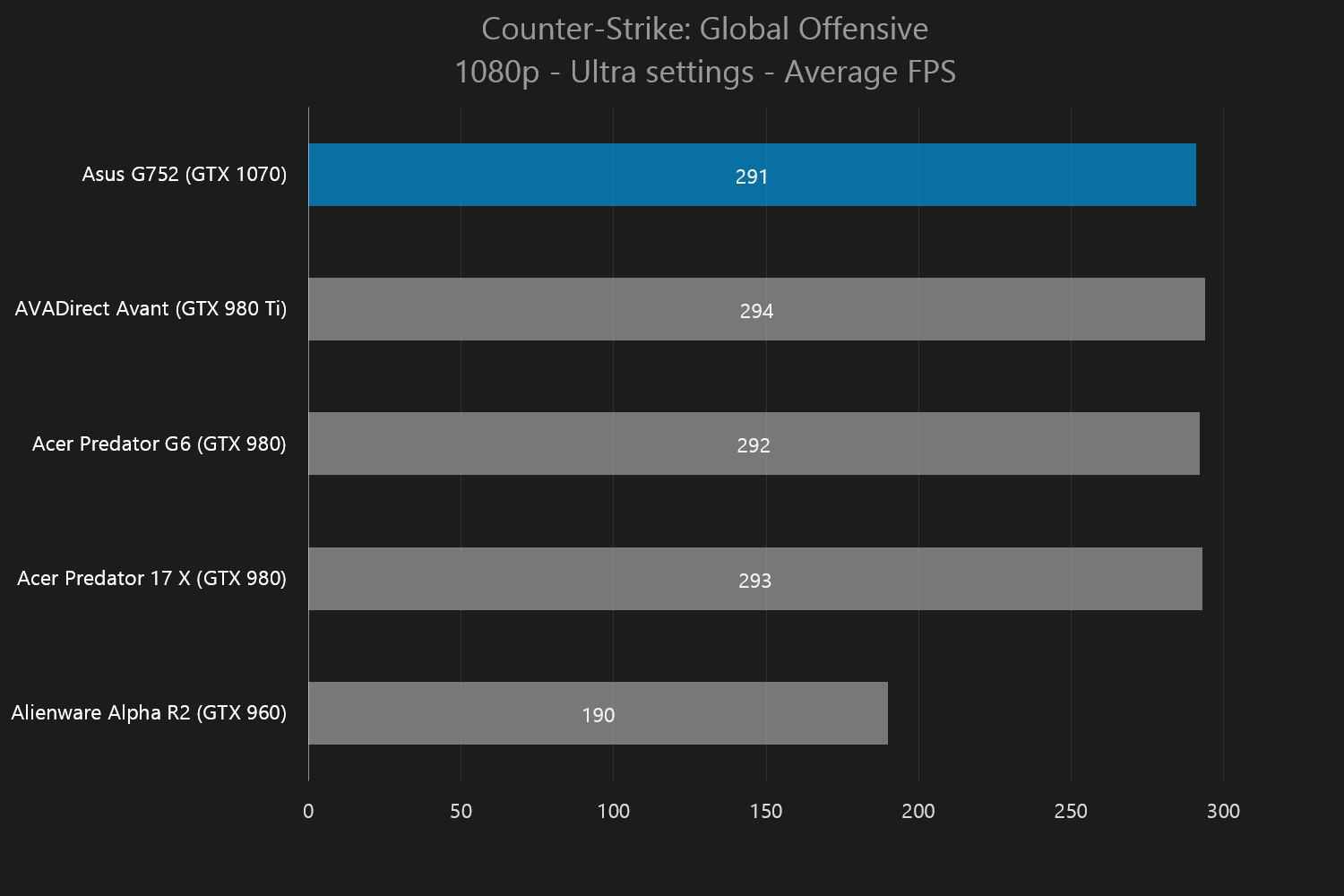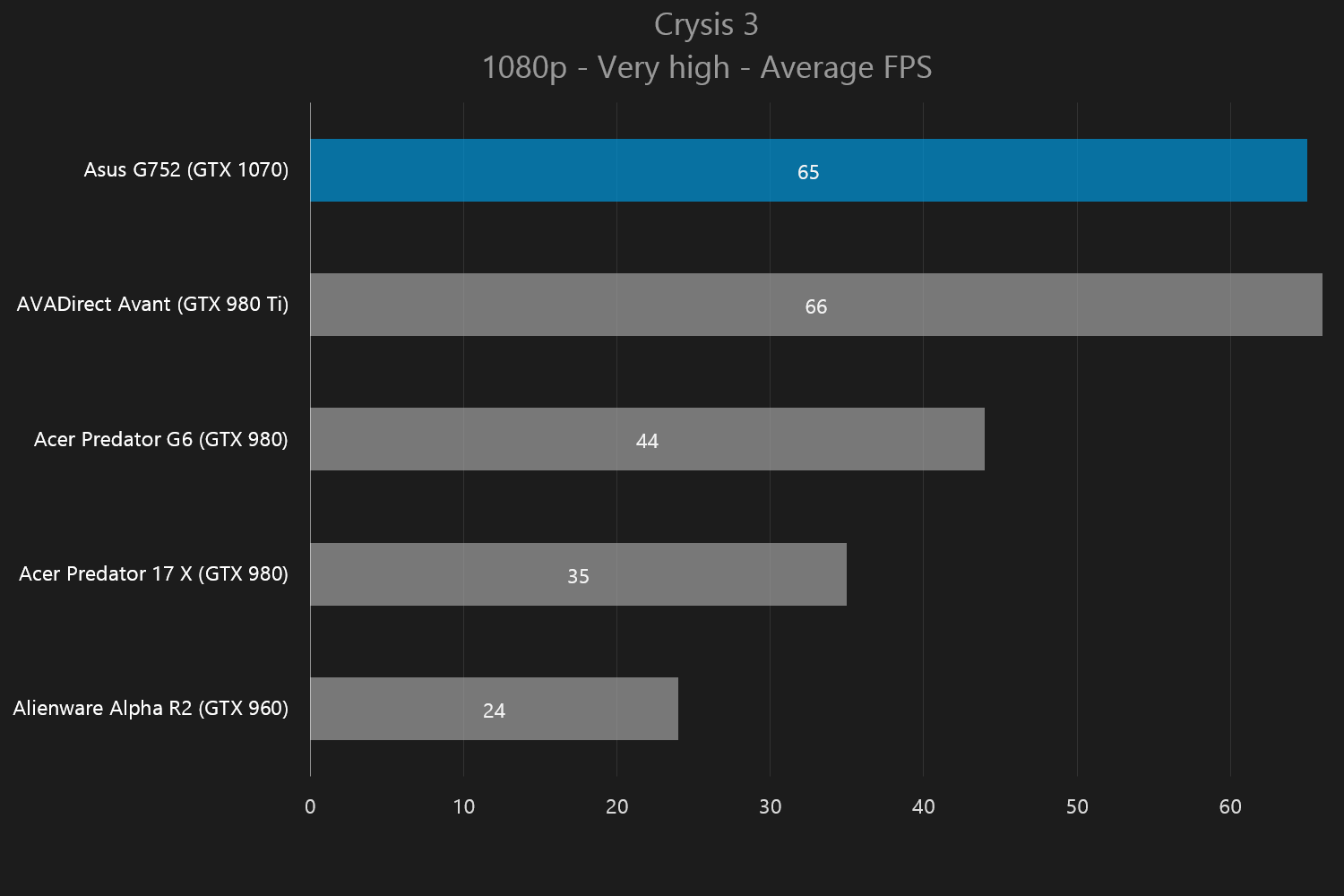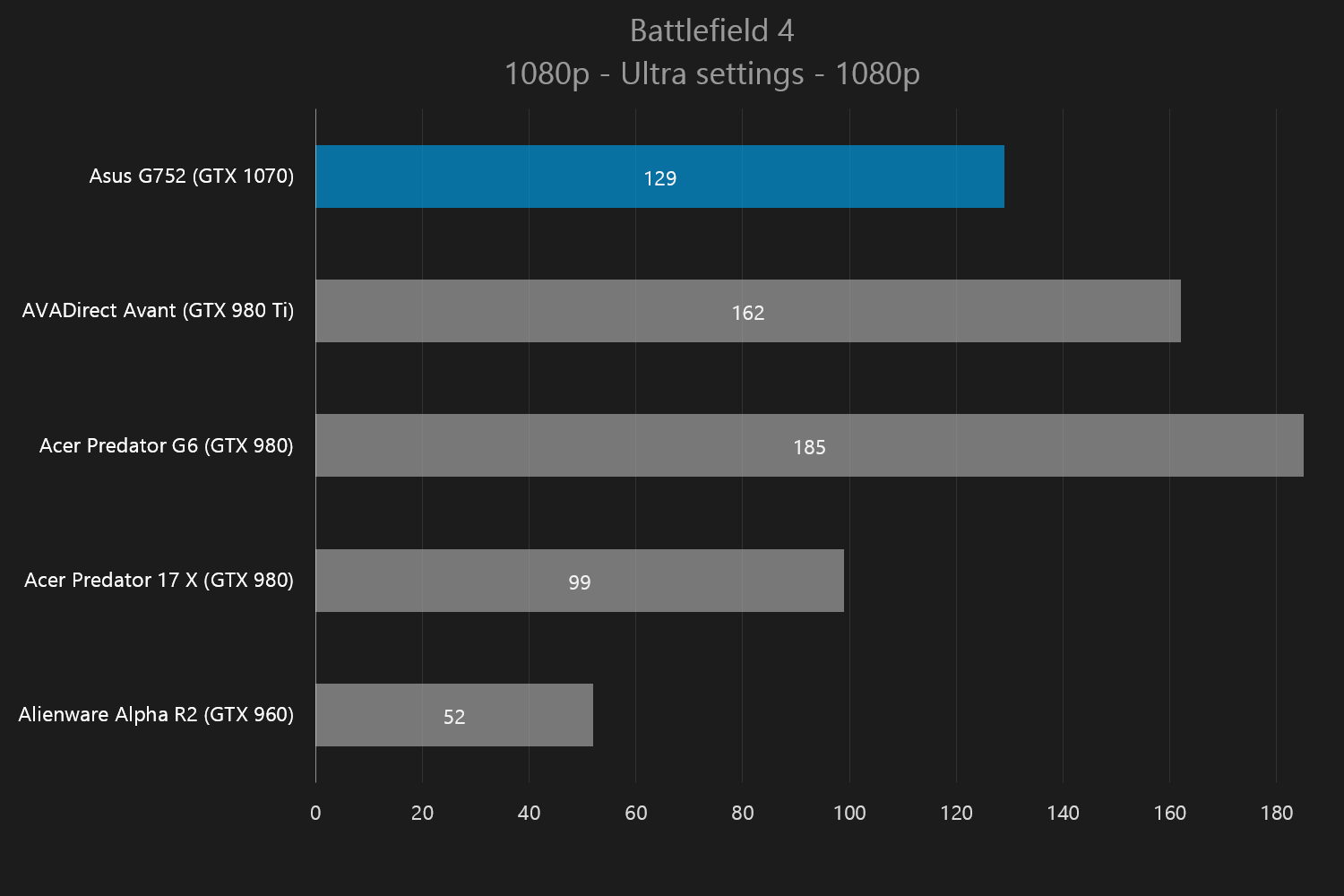
By the numbers
There are a few discrepancies between the desktop and mobile GTX 1070 (GPU-Z screenshot), and they might come as a surprise to those who are familiar with Nvidia’s process.
| Mobile GTX 1070 | Desktop GTX 1070 | |
| CUDA Cores | 2,048 | 1,920 |
| Base clock (MHz) | 1,443 | 1,506 |
| Boost clock (MHz) | 1,645 | 1,683 |
| Memory size | 8GB GDDR5 | 8GB GDDR5 |
| Memory clock (MHz) | 2,002 | 2,002 |
| Memory interface | 256-Bit | 256-Bit |
Interestingly, the mobile GTX 1070 features 2,048 CUDA cores, while the desktop version only sports 1,920. The downside is a slightly lower clock speed, about a 50MHz drop in core clock when making the move to mobile. Memory clock doesn’t suffer, staying firm at 2,002MHz.
The other deciding factor, when it comes to mobile GPUs, is that the laptop manufacturer decides where to set the clock speeds for both the cores and the memory. In the case of our review unit, Asus has bumped the core base and boost clock by 50MHz, and the memory clock by 75MHz, a decent promotion for an already sturdy chip.
Same as it ever was
Feature-wise, the mobile 10 series cards pack in the same set as their full-sized equivalent. That means the existing suite of Nvidia extras like PhysX, G-Sync, ShadowWorks, HairWorks, Surround, and the new set Pascal brings in like Ansel, GPU Boost 3.0, DirectX 12_1 feature support, as well as support for the new Vulkan API.
The other big addition is that both the mobile GTX 1070 and 1080 are VR ready. Previously, we’d seen manufacturers squeezing cards like the desktop GTX 980 in just to enable support for the Oculus Rift and HTC Vive, but no longer. As predicted, systems with VR support are growing cheaper and more available, and are no longer limited to the most humongous
But how does it run?
With the specifications behind us, it’s time to see how the mobile GTX 1070 holds up.
Remember, the mobile versions of these chips can be tweaked by the manufacturer, these results are only exactly applicable to the particular configuration the Asus G752 we tested is equipped with. With that said, though, we’d expect variations found in other laptops to be minimally different.
The chips also aren’t available as standalone cards for consumers, so the only time you’ll see them is in pre-assembled systems. The Core i7-6820HK in the Asus shouldn’t bottleneck the new GTX 1070, but we can’t standardize the processor, as we do with desktop video card testing. You might see different results if you bought a laptop with a Core i7 dual-core with a GTX 1070 (though we doubt any laptop manufacturer will end up selling such a configuration).
So, with the details out of the way, let’s get to the results.
These synthetic tests, from 3D Mark, show the mobile version lining up just behind the desktop GTX 980 Ti. That’s pretty awesome, considering the 1070 is a mobile chip. That also makes the GTX 1070 significantly quicker than the fastest single-GPU mobile solution previously available for laptops, the GTX 980M.
In fact, the mobile GTX 1070 even cruises past the desktop GTX 980 found in the Acer Predator 17 X. Until now, that was the fastest available GPU in a gaming laptop. But the GTX 1070 takes almost a 35 percent lead over that option in 3DMark.
The real-world gaming tests back up that evaluation. The GTX 1070 in the G752 is more than capable of any game you throw at in in 1080p, not just at our target 60 frames per second, but also at the screen’s 75Hz refresh rate. In fact, Fallout 4 barely drops below 80 FPS at a minimum with ultra settings. Counter-Strike Global Offensive slams right into the engine’s max FPS cap, and there’s plenty of breathing room in Battlefield 4 for smooth 75 FPS play. Even Crysis 3, a title that brings even hardened gaming machines to their knees, runs a fairly smooth 65 FPS with the settings on very high, sharing a strong lead compared to most of the competition.
A change in the power dynamic
One of the main benefits of moving to a smaller construction process is power efficiency. While individual manufacturers set the power envelope for the chips when they’re installed, Nvidia did say that the GTX 1060, 1070, and 1080 match the 970M, 980M, and 980’s power envelope respectively, according to a quote obtained by Tom’s Hardware.
Of course, the power the GTX 1070 saves over the previous generation’s GTX 970 offering is at least partially offset by GPU’s added performance. That means that, on average, the newer G752 system pulled just over 13 percent more power than the model with a 970M.
However, the gap in our 7-Zip processor power test was almost 21 percent, while the difference with Furmark putting maximum load on the GPU was just under seven. The point is, the GTX 1070 needs roughly the same or slightly more power than the previous generation 980M, as promised.
I’ll take mine to go
Power efficiency is largely to thank for that boost, and its effect has even more bearing here than it does on the desktop versions of the card. A 35 percent jump over the previous generation’s best option is impressive.
And for the first time in a while, it feels like the this laptop’s screen and GPU are an even match. We’re used to seeing

